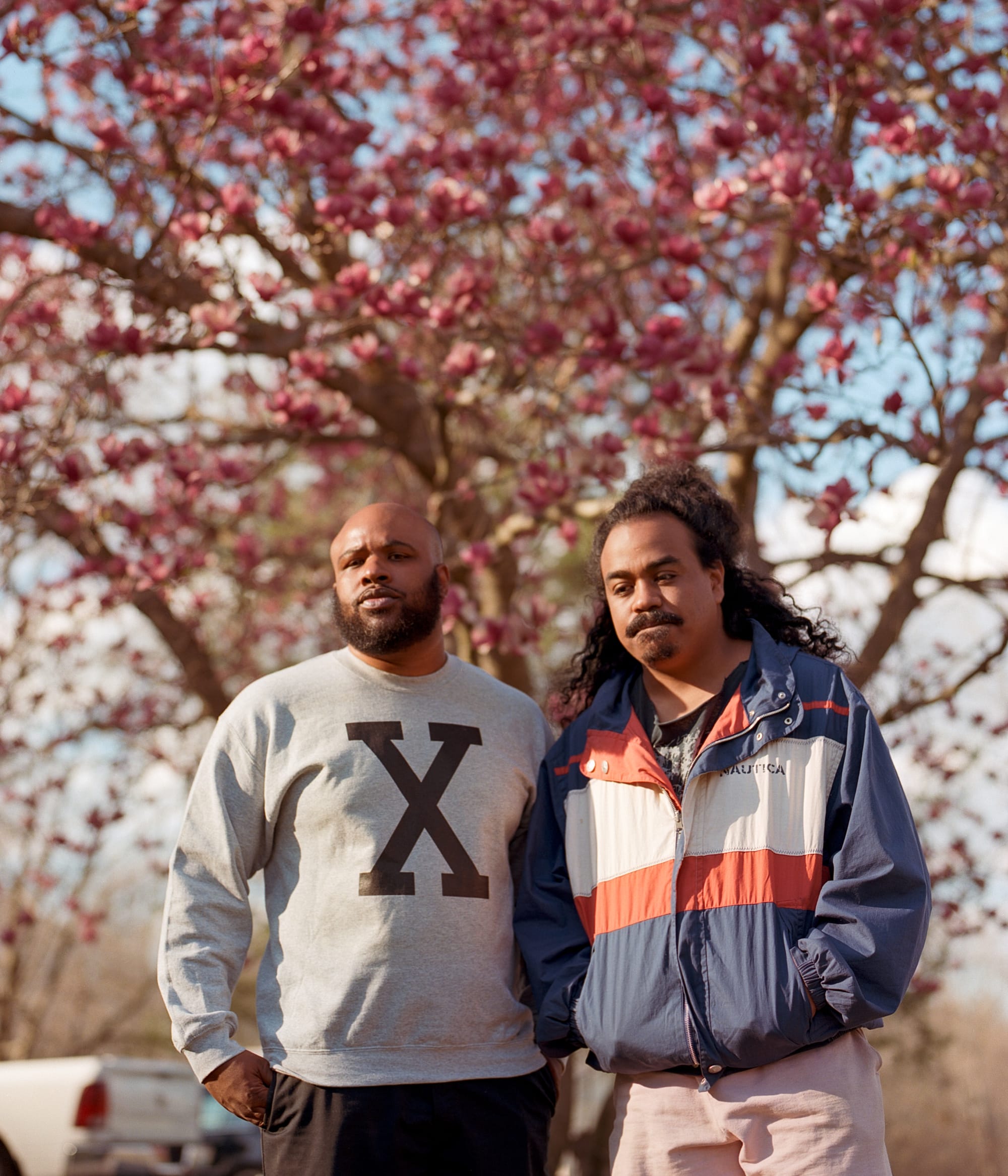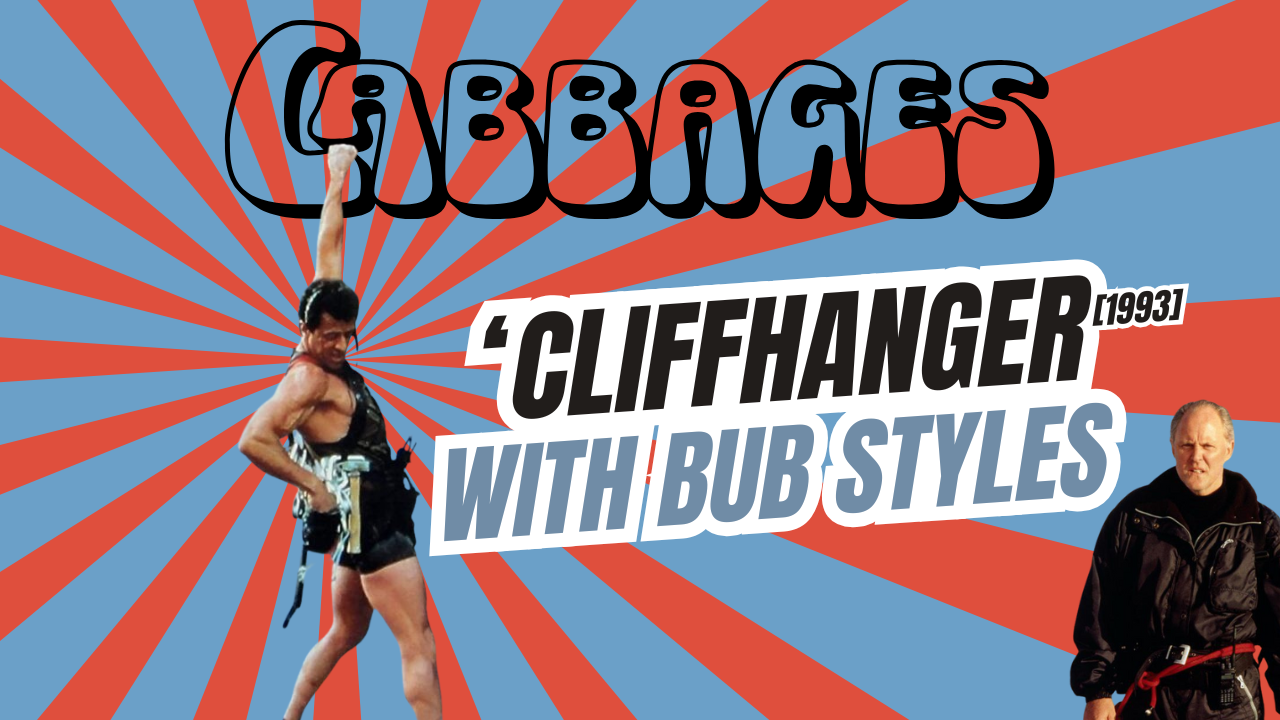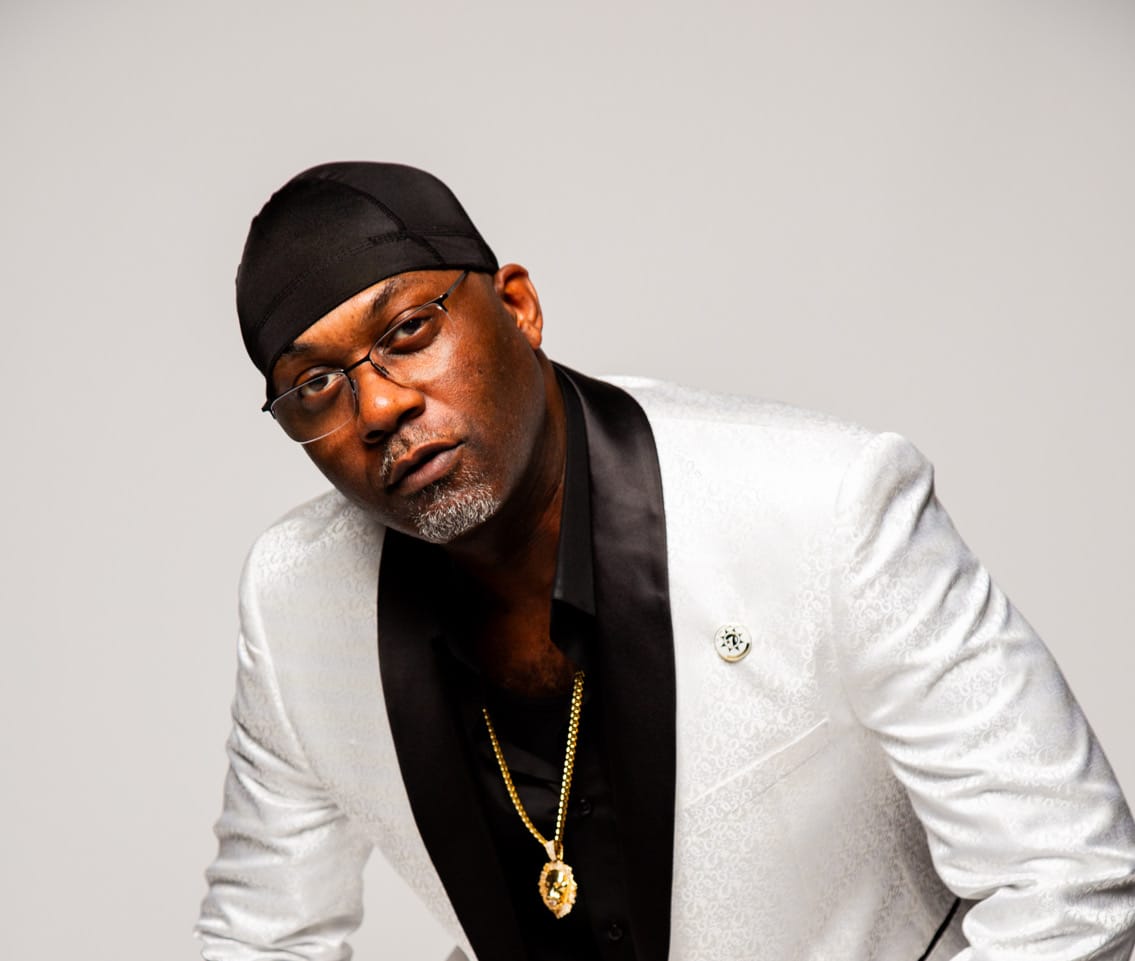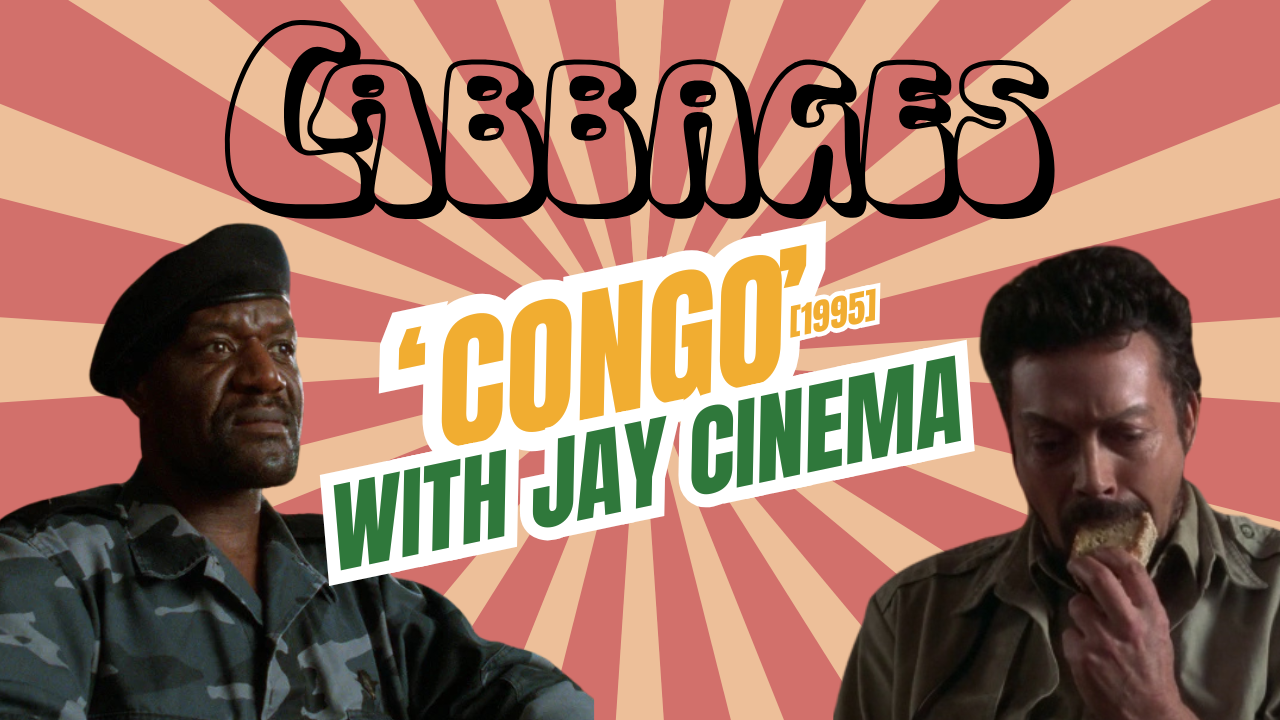Cartel Madras: The Cabbages Interview
Sibling duo Contra and Eboshi discuss the history of their creative process and concluding the Project Goonda trilogy.
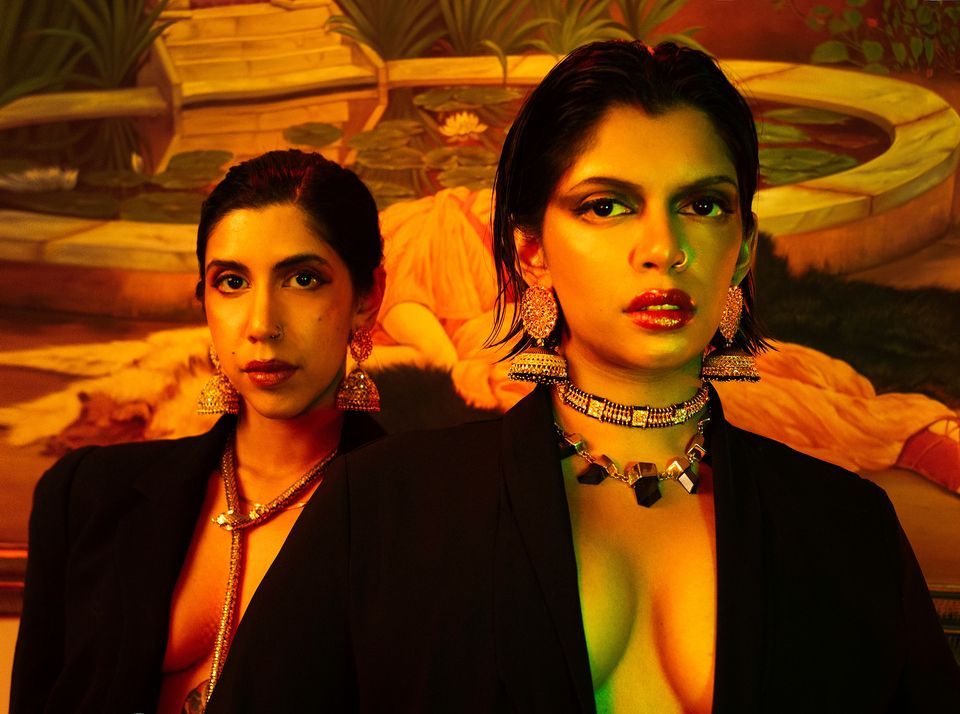
A rap duo comprised of siblings Contra and Eboshi, Cartel Madras represents hip-hop on their own terms. Artistically driven and fundamentally fresh, their three diverse projects for Sub Pop Records comprise a thematic story-centric work known as the Project Goonda trilogy. Released last year, the concluding volume The Serpent and the Tiger–which made Cabbages' Best Hip-Hop Albums of 2021 list–features rapid-fire raps over superb club-adjacent rhythms.
Below are edited excerpts from our conversation.
How did hip-hop first enter your lives?
Contra: There's two answers to this question, and the first answer, giving you cultural context: we live in Canada. We live in Alberta, specifically, immigrating here as kids. A funny thing happens when you are, like, a weird brown immigrant kid–you gravitate towards hip-hop pretty immediately. At least when we were younger, that was the case, 'cause you're sectioned off when you come here. It's like white and everyone else, especially in a landscape like Alberta. I don't know how much you know about Canada, but Alberta is very—it's like we're in Texas. We're crazy down here. It's really buckwild. I mean that philosophically and literally. This whole province is obsessed with cowboy culture, for reasons I don't know. We have the Stampede, it's our annual event. Terrible part of my childhood. People fly in to dress up as cowboys, cosplay as literal American cowboys. It's very weird, but this is the context for the society we grew up in. So there's a natural gravitation towards music from other people of color in the west.
The other thing is you see the rise of hip-hop, moving from a music that is one specific genre to now becoming just pop culture and pop music. We're in the era of your MF Doom and early Kanye West, and it definitely resonated with us in multiple ways. We always loved music, I think generally, kind of obsessively, even since we were kids. It was always in our house. Our father really loved music. There’s a longstanding history of our house being filled with music all the time, and it rubbed off on us. So hip-hop was one of those genres that we really gravitated towards as kids.
When I initially heard Trapistan, the first part of the Project Goonda trilogy, you came across, respectively and together, so fully formed from a listener's perspective. But prior to that, what was your thing? When did actually rapping or writing lyrics come into play for you?
Eboshi: We've definitely been writing forever. I mean, since we were able to. I would say our drive to story writing, lyric writing, script writing, all of that came to us fairly early in our lives. We were just really engaged with consuming art: listening to music, watching movies, and then just wanting to do that, generally. I'd say that's definitely where that comes from, and how early that is is just as early as we've been engaging with culture and being able to read and write. That's always been there. In terms of engaging with music early on in our lives, we were enrolled in piano lessons and singing lessons and dance class. That exposes you to music that other people have made, and that further encourages you to make your own music, write your own lyrics. So while we were in our piano class, we were making our own music and writing a bunch of stuff. Who knows how good it was. We were just doing that.
Contra: To put it simply, when you think about writing and storytelling and being weird art kids, yeah, we were huge neck beards. We spent lots of time writing. I would say writing was our first love—even before songwriting, we were writing on the internet, writing essays, writing articles no one would read. We were very much weird pop culture art journalists as youth, through the devices we had, on social media and the internet and blogs. We always were writing music in secret. A lot of it was, you know, cringy, bad, but a lot of it was good as well. We were making weird strides. The thing was, we weren't putting it out into the world, because whatever we were writing felt weird. We were still writing music early on in that era where the only South Asian artist to exist was M.I.A. and she was on such a different level–
Eboshi: –well, the only South Asian artist to exist in the west. Not, like, in the world. She was the only one out here doing that with that sort of background. Growing up, we did watch a whole bunch of movies from where we're from, Tamil movies. That definitely played a huge role in expanding our musical library. Because if we can listen to music from India and different parts of India—like, we understand Tamil, but, like, north India, we don't understand all of the Indian languages, so if we're open to listening to all of those, we can listen to things from everywhere. We got pretty into international film rather early, so listening to music from everywhere played a big part in shaping what would become our cultural references, our musical influences. It definitely goes beyond the North American western framework of music and musical references, which is so second nature for us that we definitely took it for granted for a while. People don't always listen to international music or don't listen to music that they don't understand the language of, which seems like a huge waste. Why would you not? You know that conversation that happened when Parasite came out, and it was a whole subtitles, Oscar conversation? That was such a confusing moment, because it was like, wait, you're saying you don't read subtitles? You're saying you don't watch anime?
It sounds like it was formative, for both of you, that you had the ability to communicate with one another through and around art. Again, you said there are some things that might feel cringy now, but the reality is that you both understood each other and it was okay for that to be maybe cringy in some way, because there was something you both related to or understood in that.
Eboshi: Totally. It's good for us to work with each other, 'cause it allows us to work past the cringe a lot faster than I think lot of other artists get to. If you don't have a constant sounding board for your ideas, you can get easily sucked into your own mind as a creative, where you're like, this is the best idea I've ever had.And you just make like the most cornball shit anyone's ever heard, because no one was there to be like, yo, that's so embarrassing, or, oh, maybe that's a little too whack or a little too cliche or maybe you're leaning a little too heavy on this thing that you think you're the first to do, but so many people have done before. You’ve gotta do that to figure it out, but sometimes we get there a bit earlier, or a bit sooner, before it sees the light of day.
Because you're happy to be honest and real with one another, yeah?
Contra: It kind of goes back to your statement from earlier, about how we arrive at being Cartel Madras seemingly fully formed. I think the space we had to creatively brain dump and ideate and test and trial out versions of Cartel Madras from childhood—in its many forms, right. Yes, Cartel Madras is a music project, but before that, it existed in our reality as experimenting with what we wore and sometimes how we wrote, the personas we took on online, the film scripts we would try writing. It has kind of a weird soul and philosophical backbone to a lot of the things we tried out. So when we came at Cartel Madras, it was like all of those other projects going into this as one.
With the nature of your relationship in mind, in terms of creativity and communication, how does that process play out in making Cartel Madras records?
Eboshi: I would say it's kind of been the same for all three, but then for our most recent one, it was the most different 'cause it was made during the pandemic and we were in two different cities. For one and two, Trapistan and Age of the Goonda, we were both in Calgary. It was based a lot off of us being in the same house, in the same space, but writing separately and then coming together and working on something. We'd either find a beat or we'd start writing something and we'd talk about the idea and then we'd go off and write our separate verses and then come together and formulate on the hook or how we're gonna end the song. Trapistan was really us going back and forth between each other, testing out what would make sense, and then just playing it by ear. That was our first time recording together; everything we had done before then was just rapping in our room and recording for SoundCloud solo and not really testing it with someone else. So when we started doing this, it moved really quickly into, oh, okay, this is how we're gonna layer and this is how we're gonna write hooks together to showcase, like, this is our separate verses, this is who we are as a Eboshi and Contra, this is what a Cartel Madras song sounds like.
By the time we released Trapistan, we had started touring our province and then Canada. So when it came out, we had really narrowed it down from like 10 songs to four or five. We were like, we're gonna make a really short album, nobody knows who we are, we might as well pick the songs that do best live and see what happens. That's how Trapistan came to be.
Contra: We released Trapistan like three months into us already beginning touring in Alberta, so we really had the chance to test our sound, figure some stuff out, see what songs we liked and didn't like, which is why our projects are typically quite short. We'd make 10 songs, we'd perform 10 songs, and but we're only gonna record five.
Eboshi: And then we kept that up for Age of the Goonda. We started writing new stuff and taking it on the road with us while we were touring Canada. That worked out really well, because we could test a song that wasn't released yet and see how well it was doing in different cities. Usually, that’s a great way for us to figure out like, this is not only something we liked writing, but this is something we like performing and this is something that's like getting good feedback. This is something that people are understanding and it's resonating with our audiences where we're taking it. That worked out for Age of the Goonda really well—obviously, there were songs we hadn't tested that ended up on it.
With The Serpent and the Tiger, it was completely different, because the only song on it that got to see any airtime before the album was made was probably just “Drift,” because that was made a little bit earlier. We were touring with Sudan Archives and we got to take them on the road with us. But everything else was made in lockdown. [Contra] was in Calgary, I was in Toronto. We were making this separately. We had ideas from before that we were playing with, but mostly everything was new and everything was so different than how it had been in terms of touring, interacting with the audience, seeing what works, seeing what doesn't work. For The Serpent and the Tiger, it was like, okay, we're just gonna trust our intuition and our artistic sensibilities, see if our taste is gonna make this project what it is. So it seems like such a departure from the first two, but for us it just felt very at home in what we like.
Did you know, going into making The Serpent and the Tiger, that this was gonna be the conclusion to the Project Goonda trilogy?
Contra: We always knew.
Eboshi: We started and were like, we wanna call our first thing Project Goonda Part One, because we wanna build on this Cartel Madras Cinematic Universe idea. We wanted to introduce the world to like these two characters and all of the other stories that happen in this world. Trapistan is the first of that, and then Age of the Goonda goes further into that and really lets you know who the characters are and what the scene is. And then this seemed like a good way to conclude that narrative arc.
We knew before going into this one that it would be the longest one, and it would be the one where we get to experiment more than we had been. Going into recording, we were very much like, we're gonna try to be very honest with how we're approaching the types of sounds we wanna play with in this project and not really like box ourselves in. When we put out "Working," which is part of the project but it came out like a little bit earlier, people were like, yo, like this is sick, but what is going on? I don't understand. What's there to understand? We have like 10 songs out. There's no rubric that you could be looking towards to be like, this is what Cartel Madras sounds like.
Contra: People get attached to things that they find you doing, right? If the first impact is like "Goonda Gold," people just want that. In certain ways, "Goonda Gold" is actually the farthest from how we make music and how we sound. I think our sound essentially veers closer to a back and forth between like "Fear & Loathing" and "Lavender Nightz." But people have very strong opinions on us already, which is good, I think. That is a good sign when it comes to pop culture, like, you can elicit a reaction from somebody that is one or the other.
One of the things I really like about your music is that versatility, across all three projects but specifically with The Serpent of the Tiger. You handle club sounds just as nimbly as you do trap or grime beats, which a lot of artists cannot do. How naturally does that come to you, to want to play in those different spaces and work with these different sounds?
Eboshi: That comes very naturally to us. The reason for that is partially because we are constantly listening to a bunch of different music. Definitely a big part of that is we, for the most recent project, worked with some extremely talented producers that really knew what to do with us and our voices better than prior to that record. When we feel comfortable knowing that our voices are in good hands, and this person's gonna be able to honor the way we sound on this and make it like come to life, you feel a lot more comfortable and confident.
So many producers are so used to working with men that sometimes they don't really understand what to do with a softer voice or a more feminine voice, or the fact that we sound like dudes but we are also girls, we sound like girls. There's so much nuance and playing with voices that a lot of people in the industry aren't really familiar with yet. We felt a lot more comfortable with this project and a lot more confident in how our sound was being taken to that level, that we were like, this is a very honest and accurate reflection of what we've been working on. These songs feel like final pieces of what we've been doing.
One of the things you brought up earlier in this conversation is the use of characters and how that plays across the trilogy. How much do you see of yourselves in the characters that you're using to tell the stories here? How much of that is autobiographical?
Contra: Almost all of it is. It's actually all autobiographical, but I think the places we take you sometimes are pulled from a joint brain dump of things that inform us and that are in our history. It's weird how your inspirations can manifest into an image. For example, eight girls holding guns on top of a truck is not autobiographical, in the music video "Goonda Gold." I think the least autobiographical part of our music is actually the visuals, because that's the cinematic universe. But the writing is often just our life, how we think, what we're doing.
You know, those girls holding guns are very inspired by women in our own family, historically, and the stories we've been told about them. There's a lot of strange family journalism we do that comes out in our music. Thankfully, very few members of our family listen to our music. So, I guess in certain ways there's a privilege of distance that we have from some of the people we're talking about in our ideas around family and history that we're engaging with. And a lot of that is subconscious. Sometimes I go back and I look at a still from, like, a "Fear & Loathing" and then I'm like, oh, this is directly from an old photograph that we had saved in our archives five years ago. You don't even really realize it until you make it and then you go back to it. It's weird how these things flow out of you when you're creating your art.
In the same vein, I do wanna say there's this interesting thing that a lot of men use in music–specifically in rock, in punk, in hip-hop–where they embody this larger than life version of themselves. They can play in between their reality and their ideas on who they could be in other realities. And it's very often not extended to women, that ability to morph through your art. For example, you listen to like a Ghostmane, who's rapping about straight up bat shit things. And it's like, I'm sure you didn't put a thousand rounds of bullets in anyone's head, Ghostmane. But there's this kind of freedom and exhilaration we allow a lot of male rock stars and musicians to imagine themselves in the height of their power, in the height of their violence. And I find women are not allowed to go in that direction. Pretty early on, we were like, no, we're gonna do that.
Eboshi: It's really not us being like, let us now respond to the generations of men. Like, we listen to that music too. It sounds good. So it's not like a negative reaction to it. It's more just like, okay, we're gonna try, hopefully it works out.
Contra: And it kind of flows naturally. When we were young, we were definitely–how would I explain it? The word I'm looking for is like, non-binary. It's almost like an extremely non-binary and queer approach to music. We were very fluid when we were young, in our youth, in how we even embodied certain characters in music and film, the people we took after, who our heroes were. There was no one I resonated with more than Kanye West, once upon a time. The figures we latched onto as kids, it was a wide array of people from everywhere. And when we were making our own art, that flowed through us. Later on, when I analyze it, I'm like, okay, interesting. There's certain things we do that are obviously a bit more masculine. We borrow a lot from some of the male stars that we grew up loving.
Eboshi: I would say it's predominantly an ungendered approach to absorbing influence and then creating art. Because so much of how art is written about is through a gendered lens or a gendered focus where people really do write about like, female artists and female musicians. We do say, we give the qualifier, through a woman's lens, of the female perspective. That's great and it's super important, but what if that's not the case at all? What if someone's just writing? No matter what, all of your experiences are gonna bleed into what you write.
We've had a really great time, reading what people have written about us. It's been a huge honor and privilege to have a decent amount of stuff written about us, because it's like, oh, I guess we're worth talking to. But I'd say that sometimes people really try to place this gendered focus onto our work, which I think, when we're creating our work, we are very absent from that. Obviously it's so easy to turn a duo of female rappers into, you know, girl bosses–and we're just really not that.
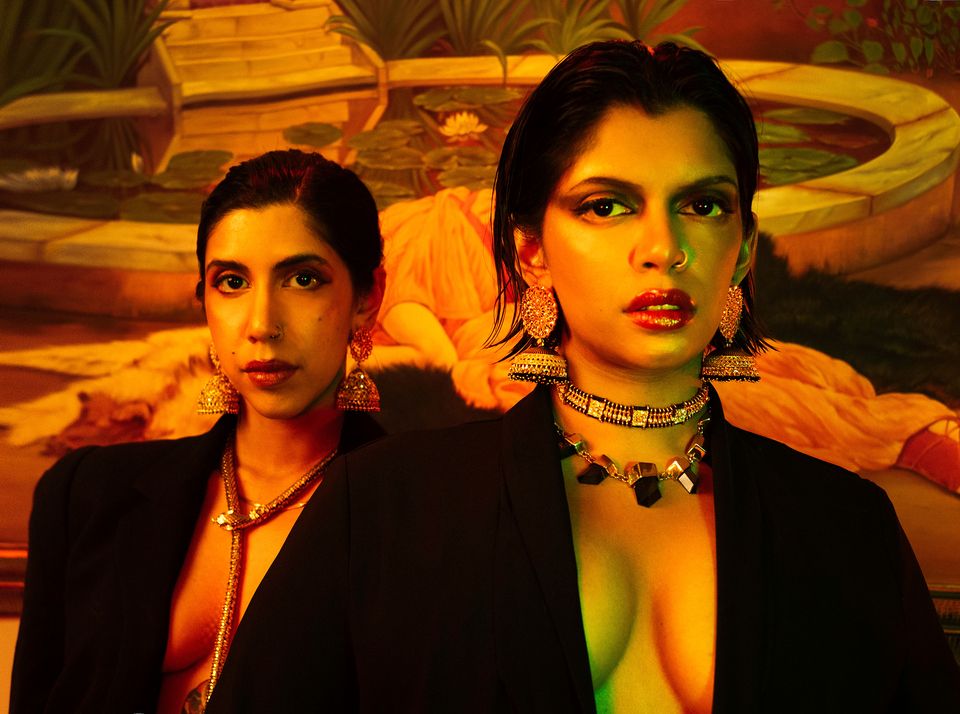
Purchase The Serpent and the Tiger on Bandcamp or listen wherever music is streamed or sold.

